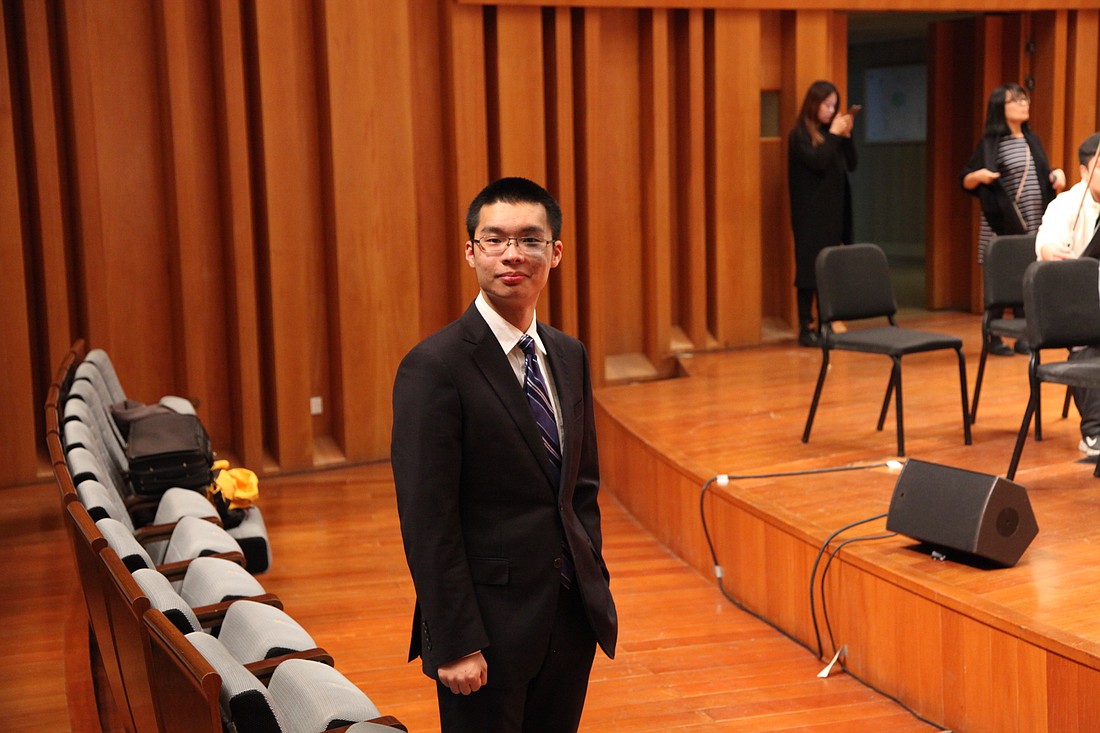- April 4, 2025
-
-
Loading

Last week while Sarasota was preparing for a first-ever three week run of a musical at the Van Wezel Performance Hall, the Sarasota Orchestra was also involved in a first-ever event: “EarShot,” a workshop-performance collaborative for young composers.
Initiated by the American Composers Orchestra in partnership with the League of American Orchestras and a couple of other groups, EarShot is the first ongoing program for identifying and promoting the most promising young orchestral composers on a national level.
Sarasota Orchestra was selected to participate in this event, and throughout the week, four young composers were mentored by four established composers. They were able to workshop, rehearse and improve their selected works with members of the Sarasota Orchestra before they were presented in a final concert on Saturday night at the Symphony Center’s Holley Hall.
Each of the young composers — Krists Auznieks, Nicky Sohn, Sam Wu and Kitty Xiao — was coached by composers Mark Dancigers, Robert Beaser and Chinary Ung. Laura Karpman, also scheduled, was unable to attend.
Various sessions and sectional rehearsals were held throughout the week as the orchestra, conducted by Christopher Rountree, worked through the thickets of notes, effects and sounds these young composers had committed to paper. Suggestions were made, passages perhaps changed, or left the same, but each of the four selected works was reviewed by composer, mentor, conductor and orchestra.
The week climaxed with two public performances. The first, on Thursday night, titled “Master Composers,” featured chamber music by the four mentor composers performed by members of the Sarasota Orchestra.
Dancigers’ “Skyline” for electronically enhanced solo violin was performed by Samantha Bennett, and she gave the arpeggio lines of sounds “written in the sky,” full meaning as the electronic echo and reverberation added depth to the solo voice.
Beaser’s “Brass Quintet” brought forth blocks of sound with moving and transforming motives in a basically tonal framework that exploited the full range of the instruments.
“Spiral III” by Chinary Ung is for string quartet and, as he explained, showed how small seemingly different motives can be put together to form a perfect whole, again with shimmering and moving shapes.
Although she was not present, Karpman’s “Different Lanes” for string quartet was both amusing and intriguing, with each movement reminiscent of music by Bernard Hermann from a Hitchcock film, accompanying an impressionistic film in Los Angeles freeway traffic. Intriguing and delightful.
Saturday’s concert featured works of the four young composers and the full Sarasota Orchestra, conducted by Rountree, followed by an audience question and answer and talk-back section moderated by Aiden Feltcamp, EarShot coordinator.
Featured were “Wind Map” by Wu, “Crossing” by Auznieks, “Ink and Wash” by Xiao, and “Bird Up” by Sohn.
All these works dealt more with motives, sounds, impressions, sonic sculptures and textures, orchestral color, tone clusters and effects rather than traditional and more familiar melodic and harmonic structure. In this, some works were more successful than others.
Wu’s “Wind Map” created a sonic equivalent of the shifting of winds and patterns of the world’s weather from the extreme violence of storms to the quiet falling of rain or snow, only to be followed again by more storm. His use of orchestration was quite descriptive and at times reminded me just a bit of “Cloudburst” from Grofé’s “Grand Canyon Suite.”
Auznieks’ “Crossing” and Xiao’s “Ink and Wash” were both interesting and evocative, but to me were less effective than the other two works.
Closing the concert was “Bird Up” by Sohn, depicting the nature and clatter of New York City encountered by actor Eric Andre dressed as a bird, running through the city creating and leaving chaos behind him. A bit like John Adams’ “Short Ride in a Fast Machine” on steroids, this piece never lets up with its plethora of police whistles, sirens, gongs, bass drums and tam tam punctuating the virtuosic and cinematic scoring of this elongated chase scene. This was truly the crowd pleaser of the night and certainly deserves a place in the orchestral repertoire.
The Sarasota Orchestra should be applauded and encouraged to repeat this involvement in “EarShot,” since it is good for the composers, the orchestra and especially for all of us in the audience to discover the new sounds in music being created today. Let’s hope for a repeat next year.